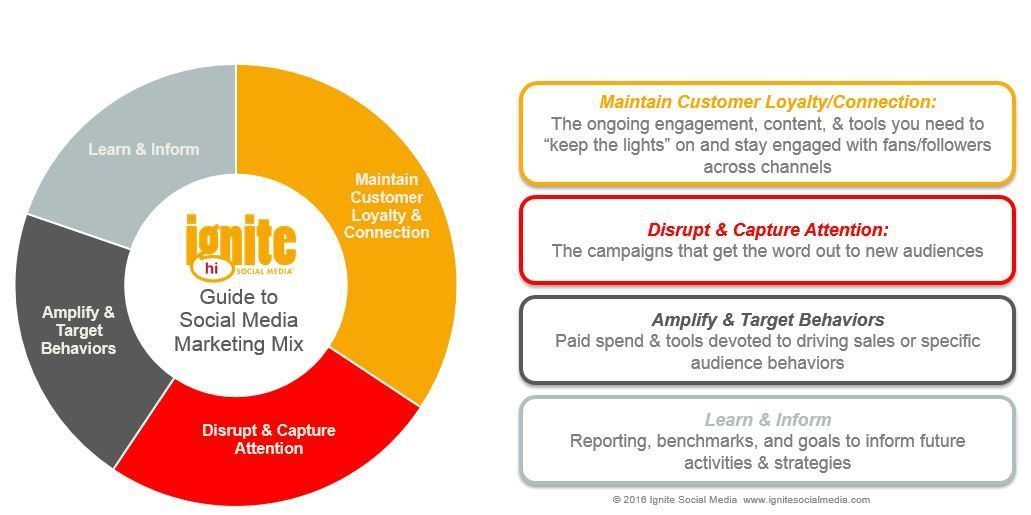
The most common question is "How often should you post on Facebook?" There is no one right answer. This is particularly true for social networks like Twitter or Instagram. However, there is an exception: LinkedIn, the suit-and-tie of the social media world. Your business type will determine the best time to post on social media platforms. If your brunch service is available, it might be a good idea to post on Sundays early in the morning. You should also keep your social media accounts active for at least a few months to monitor and adjust the reactions of your followers.
There is no one formula that will determine how frequently you post to social media.
While there is no one right way to decide how often you should post on social media sites, there are some guidelines that can be used to optimize your results. Know your audience first, then post regularly. Although regular posts are a great way to increase your exposure and engagement, they don't mean you have to post every day. You can focus on sharing relevant content on social networks frequently and see how your audience responds to your posts.
Instagram is a low-volume/high value network.
Instagram can be used for marketing. You're probably familiar with the misconception that it is high volume and low quality. You can optimize your posts in order to get the most out of your time and reach your target audience. One of the best ways is to understand your audience's preferences and geography. To optimize your posting time, it is possible to find out the average time that users are online from different areas. A great way of improving your content strategy is knowing when your audience is most likely on the internet. You may need to adjust your strategy or write less copy if you have an English speaking majority of your audience.

Twitter is the exception rather than the norm
While there are many rules about posting on social media, Twitter stands out for its strict policies. Photos of private individuals cannot be published without permission. While this does not mean that private information shouldn't be shared, there are instances where the public interest is greater than the safety risk. While Twitter doesn't have the same restrictions as Facebook, it does require that users report the photo or video in first-person.
LinkedIn is the suit-and tie social media world.
LinkedIn has long been the suit-and-tie social network for business professionals. While many social media platforms cater to personal interests and hobbies, LinkedIn is focused on business. LinkedIn's content focuses primarily on the 9-to-5 working day. This type of network is ideal for software companies and business-to–business companies. LinkedIn posts should be limited to no more than three to five blog posts per week.
Pinterest is a high volume/low value network
Here are some ways to improve your Pinterest visibility. While posting once or twice a day will help your posts appear in the right place, you can post as frequently as you'd like to get the most out of your social media marketing efforts. It is a good idea to post at most one product pin each day. Pinterest allows users to find product information such as descriptions, prices, availability and descriptions by using Product Pins. Users can find information about the products they like and easily buy them.

Twitter is a low-volume/high-value network.
Twitter is used by many companies for SEO. But it's important to realize that Twitter is a high-volume, low-value network. Twitter's nature makes quality results difficult, even though some businesses may be able to take advantage of it. It is common for new users of Twitter to receive lower returns that those with established accounts. Twitter is a great way to de-escalate situations.
FAQ
Which Content Marketing Platform is Best?
There are many platforms on the market today. Each one has its pros and cons. These are some of the most popular choices:
-
WordPress - Easy to set up and manage. An amazing community of users.
-
Wix is easier than WordPress to set-up and maintain. You do not need to have any technical knowledge.
-
Squarespace - The best option for people who have a website.
-
Blogger - Free blog service
-
Medium – A place that writers can share their work.
-
Instagram – An image-based platform.
-
LinkedIn - An online networking tool.
-
Facebook - A social network.
-
YouTube - Video sharing platform.
-
Pinterest – Image-based platform.
-
Google Analytics - Track visitor behavior.
-
Hubspot – Email marketing software.
-
MailChimp: Email marketing software.
How can you create great content?
It is important to have interesting, useful and shareable content. The best content will have a clear call for action. This could be a link or button that allows readers sign up for a trial, read more about your product, or order something from your site. Also, visuals can be used to easily share your content across different media platforms.
How many hours per week should I spend on content marketing?
It all depends on your circumstances. It may not be necessary to invest much time in content marketing. However, if you want to drive traffic to your site you will likely need to dedicate at least one hour per day.
Do I have to post links to content on other sites?
Yes! This is called link building. Linking back from other websites is a great way for your site to get more traffic. Links to credible sources should only be included.
Statistics
- Content marketing produces 3X more leads per dollar spent. Content marketing costs 62% less than traditional marketing. (criteo.com)
- Companies that use content marketing see approximately 30% higher growth rates than businesses not using it. (mailchimp.com)
- Forty-seven percent of buyers view 3 to 5 pieces of content before engaging with a sales representative. (mailchimp.com)
- According to the Content Marketing Institute, 70% of B2B marketers and 86% of B2C marketers surveyed use content marketing in some form or other. (criteo.com)
- Measure your goals with a progress indicator of 0-100%. Make your goals collaborative and transparent (semrush.com)
- Progress indicators (0–100%) allow each team member to see how attainable each goal is and understand what remains to be accomplished. (semrush.com)
- This marketing strategy landed Ford a 15.4% conversion rate. (neilpatel.com)
- According to our research, brand awareness, attracting traffic, and generating leads remain the key content marketing goals in 2022. (semrush.com)
External Links
How To
How can you make videos more exciting?
Video Marketing is one powerful tool in Content Marketing. It helps you connect to your audience, engage with them emotionally, and build trust. How do we turn boring into awesome? Let's dive into some simple tips!
-
Tell a story. Storytelling lies at the heart and soul of all communication. Video marketing can't function without storytelling. To tell stories, you need to ask yourself what kind you want. Is it something entertaining? Educational? Inspiring? It's easy to find inspiration on social media. Use these stories as inspiration to create your own.
-
Use images. Images help convey emotions faster than words. Images enable us to make connections with others, and allow us empathy. Include images in your videos. You can add pictures to your slideshows or embed them directly in your blog posts.
-
Make it easy to share. You want viewers to spread the word. Make it easy. Include sharing buttons in your videos. Add social icons to your slideshows. If you have a YouTube channel, add "Share" boxes.
-
Don't overdo it. Too many graphics and too many details can cause viewers to lose interest. Keep it simple. A few striking images are all that is needed to grab your attention and keep you there.
-
Keep it short. People love to see short videos. Make short videos, no more than 5 minutes, to build buzz around your brand.
-
Get feedback. Most importantly, listen to your audience. Ask them to tell you what works. Use the answers to improve your content.
-
Make a plan. Think about the next video you might create. Can you create a series? Maybe you can create a playlist with the most watched videos?
-
Test, test, test. It is not a good idea to release a video only to find out that no one watches it. You should test any video before it is released. Take a look at the reactions. You can then make changes based off those results.
-
Repeat. Keep going until you find your perfect formula. You'll be able create amazing videos every time you learn what works.
-
Measure the results. It's crucial to measure the success and failure of your videos. How did they perform? Which types of viewers prefer certain videos? These questions can help you refine your strategy.
-
Adjust as needed. You can't stop learning after your video campaign is live. Learn from your mistakes and adjust your plans as necessary. Marketers who are the best always seek out ways to improve.
-
Enjoy it. It's not difficult to do video marketing, but it requires patience. You'll gain more experience and learn new strategies and techniques to help your business grow.